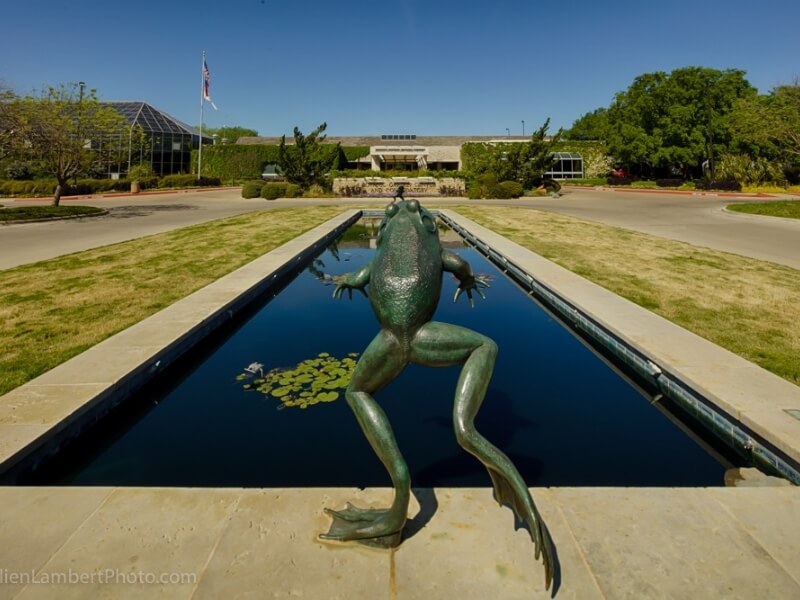Guidelines for Authors
Journal of the Botanical Research Institute of Texas (issn 1934-5259) (formerly Sida, Contributions to Botany) is an international journal of systematic botany containing primary research papers sensu lato, including anatomy, biogeography, chemotaxonomy, cladistics, ecology, floristics, genetics & evolution, morphology, numerical taxonomy, paleobotany, and palynology. Papers on botanical history are also welcome when appropriate. Geographic coverage is global; J. Bot. Res. Inst. Texas accepts submissions in English or Spanish, and all published articles include abstracts in at least two languages. We encourage and welcome authors to include abstracts in the local language of the area in which the research was conducted.
Scope & Aims
We accept global submissions in English or Spanish and include abstracts in at least two languages. Authors are encouraged to include additional abstracts in the local language of the research area to support broader knowledge sharing.
All submissions are peer-reviewed. We offer bilingual distribution, rapid turnaround, personal service, and expert advice. For the latest submission details, please contact the Editor.
How to Submit
Submit all manuscripts via email to jbrit@brit.org. A cover letter is not required but may be included in the email body to highlight key points (e.g., title, reviewer suggestions, funding, etc.).
Submissions are first reviewed by editors to ensure alignment with the journal’s scope before being peer-reviewed by two to three referees. Authors may suggest or exclude referees with justification. Manuscripts may be in English or Spanish, and page costs are currently $40 per page (with a 15% discount for subscribers). Fees may be waived or reduced in certain cases—please contact the Editor to discuss options.
All other inquiries should be directed to:
Barney Lipscomb
Botanical Research Institute of Texas
1700 University Drive, Fort Worth, Texas 76107-3400, U.S.A.
Email: jbrit@brit.org
Phone: 1-817-332-4441
Fax: 1-817-332-4112
Submissions Overview
- Submit in .doc, .docx, or .rtf format
- Use letter size (8.5 × 11 inches)
- 1-inch margins, Times New Roman, 11pt font, 1.5 line spacing
Figures may be submitted as low-resolution JPGs (email attachments or embedded in the doc) for review. Upon acceptance, submit high-resolution TIFF files (via email, CD-ROM, or file-sharing service like Dropbox).
Scanning Requirements:
- B/W line drawings: 600 dpi+
- B/W halftones and color photos: 300 dpi
- Final image/text size: 5.5 × 8 inches
BRIT Press staff can digitize figures if needed. All original materials can be returned upon request.
Refer to recent issues for examples of article format, especially for titles, author listings, and contact details. Authors are encouraged to use the APG IV families, which can be accessed through the Missouri Botanical Garden research site (Angiosperm Phylogeny Website).
Formatting Your Manuscript
-
Every paper should include both an English and Spanish (or another major language) abstract. If you cannot provide an abstract in a second language, a Spanish or English abstract will be added for you. We welcome authors to submit additional abstracts in the language relevant to their research area or topic to encourage repatriation of knowledge back to local cultures.
-
Label information should be provided for specimen citations in the label’s original language. No translation is necessary. Similarly, follow whatever unit of measure is provided on the label (e.g. metric or standard/English). Use the collector’s last name (or full name) and number (or “s.n.”) and italicize both. Abbreviate the months of the year by the first three letters of the month without a period. Separate country and state/region/subdivision names with periods with a colon following the terminal name (separating the locale names from the beginning of the locality description).
Examples:
U.S.A. Texas. Jeff Davis Co.: l mi W of Fort Davis, 3 Jan 1972, Smith 118 (BRIT).BRAZIL. Bahia: Serra da Agua de Rega, 23 km N of Seabra, road to Agua de Rega, ca. 1000 m, 24 Feb 1971 (fr), Irwin et al. 30894 (HB, MBM, MO, NY).
-
Ageratina thyrsiflora (E. Greene) R. King & H. Robinson, Phytologia 19:227. 1970. Kyrstenia thyrsiflora E. Greene, Leafl. Bot. Observ. Crit. 1:9. 1903. Eupatorium thyrsiflorum (E. Greene) B.L. Robinson, Proc. Amer. Acad. Arts 43:36. 1907. Type: MEXICO. Chihuahua: Southwestern Chihuahua, Aug 1885, E. Palmer 275 (lectotype, designated here: US, internet image!).
Eupatorium arborescens M.E. Jones, Contr. West. Bot. 12:43. 1908. Type: MEXICO. Chihuahua: Sierra Madre Mts., Guayanopa Canon, 3600 ft alt., in the Tropical Life Zone, 24 Sep 1903, M.E. Jones s.n. (lectotype, designated here: RSA-POM 41799, photocopy!; isolectotype: RSA-POM 41800, photocopy!).
Koanophyllon palmeri (A. Gray) R. King & H. Robinson, Phytologia 22:150. 1971. Eupatorium palmeri A. Gray, Proc. Amer. Acad. Arts 21: 383. 1886. Gray did not cite a specific collection but noted “type locality, ‘shady places high up in mountains above Batopilas.’” Type: MEXICO. [Chihuahua]: Southwestern Chihuahua, Aug–Nov 1885, Palmer 144 (lectotype, designated here: GH!; isolectotype: US, internet image!).
Eupatorium thyrsiflorum var. holoclerum B.L. Robinson, Proc. Amer. Acad. Arts 43:36. 1907. Type: MEXICO. Durango: City of Durango and vicinity, Apr–Nov 1896, E. Palmer 755 (holotype: GH; isotypes: MO!, US, internet image!).
Eupatorium solidaginifolium A. Gray, Smithsonian Contr. Knowl. 3(5) [Pl. Wright. 1]:87. 1852. Type: U.S.A.: “Collected in Expedition from Western Texas to El Paso, New Mexico, May–Oct, 1849, by Charles Wright” [as on label], Wright 256 (holotype: GH, photocopy!; isotype: GH, photocopy!).
Chromolaena bigelovii (A. Gray) R. King & H. Robinson, Phytologia 20:208. 1970. Eupatorium bigelovii A. Gray in Torrey, Rep. U.S. & Mex. Bound. Survey, Bot. 75. 1859. Type: U.S.A.: [locality uncertain but probably along the Texas-Coahuila boundary, 1848–1855], J.M. Bigelow 12 (probable holotype: GH, photocopy!).
Bellis ciliata Raf. var. triflora Raf., New Fl. N. Amer. 2:25. 1837. Astranthium integrifolium (Michx.) Nutt. var. triflorum (Raf.) Shinners, Sida 2:348. 1966. Type: U.S.A. Texas. Fannin Co.: 4 mi N of Bonham, sandy ditch bank, 10 Jun 1945, L.H. Shinners 7842 (Neotype, designated here: SMU!).
Erigeron peregrinus (Banks ex Pursh) Greene var. thompsonii (Blake ex J.W. Thompson) Cronquist, Brittonia 6:144. 1947. Erigeron thompsonii Blake ex J.W. Thompson, Rhodora 34:238. 1932. Type: U.S.A. Washington, Grays Harbor Co.: open bog near Lake Quinault, 10 Jul 1931, J.W. Thompson 7336 (holotype: US!; isotypes: GH!, K, MO!, UC).
For more examples, click here.
-
Use the author abbreviations as given in the Author Abbreviations compiled at the Herbarium, Royal Botanic Gardens, Kew (1992). Use et or the ampersand (&) between two authors; for more than two authors, restrict to the first one followed by et al. Do not italicize or underline in the manuscript the terms et, et al., ex, or in.
Plant names in the text should include authorship or clearly state the botanical nomenclature being followed.
-
In July 2011, the International Code of Botanical Nomenclature was revised and became the International Code of Nomenclature for algae, fungi, and plants (Shenzhen Code) (Regnum Vegetabile 154. A.R.G. Gantner Verlag KG. ISBN 978-3-87429-425-6). Under the new guidelines, descriptions for new taxa are no longer required to be in Latin (Chapter V, Section 2, Article 39.2).
Authors should provide a full description and diagnosis for each new taxon in either Latin or English. A Spanish version may follow the Latin/English diagnosis if submitting a Spanish-language manuscript. Write plant descriptions as incomplete sentences with phrases separated by semicolons.
Example:
A Poa diaboli Soreng & D.J. Keil plantis dioeciis? (versus sequente gynomonoeciis), surculo sterili tantum extravaginali…
Plants perennial; dioecious (?); short rhizomatous and stoloniferous, loosely tufted, tillers extravaginal.
-
Recommendation: Consider acknowledging the herbaria consulted for any data in your paper as this acknowledgment might help herbaria and institutions justify their existence and support either from their own institution or from granting agencies. In a time where herbaria are merging and even dying, let’s not take them for granted.
-
This section must include all of the literature cited in the text and may include other article citations the author deems desirable.
In-text references should be cited as follows:
- When a reference is used as authority for a statement, use “Ricketson and Pipoly (1997) stated…” or “the latest revision (Ricketson & Pipoly 1997)…” Note the use of the word “and” outside of parentheses and “&” within parentheses.
- When there are three or more authors, use only the name of the first author followed by et al.: “Barrie et al. (1992a)”
- In a list of parenthetical citations, arrange citations chronologically, then alphabetically, and separate the citations with a semicolon: “…by previous researchers (Williams 1970; Davis 2004; Marshall 2004).” If websites are referenced, then include the name of the website, URL, and the date accessed.
- Do not italicize “et al.” in the text. Do include the period after “al” as it is an abbreviation for “et alii/aliae.”
End of article references should be cited as follows:
- Arrange references alphabetically and chronologically, making use of a, b, etc. if an author had more than one publication in a given year.
- Authors’ names are eventually printed in the journal using Cap/small caps, NOT ALL CAPS. Please type author names in Cap/small cap or in Cap/lower case, initializing all but the last name(s). Please note there is no space between multiple initials of a single author (Smith, A.B., not Smith, A. B.).
- Only the first letter of the initial word, proper nouns, and proper adjectives of both article titles and book titles should be capitalized.
- Journal names should be capitalized and abbreviated as designated by Botanico-Periodicum-Huntianum.
- There is no space after the colon when listing journal number and page numbers (Sida 4:1–21, not Sida 4: 1–21).
- Italicize all genus and species names.
- Do not italicize journal titles or book titles.
- You do not have to indent each citation. We will format the entire list at once with hanging indent after submission.
- Include the Digital Identifier or DOI or stable URL of the article, if one is available.
- For all other formatting questions, see examples below.
EXAMPLES:
Typical journal article citations
Barrie, F.R., C.E. Jarvis, & J.L. Reveal. 1992a. The need to change Article 8.3 of the Code. Taxon 41:508–512. doi:10.2307/1222822Calviño, C.I., S.G. Martínez, & S.R. Downie. 2008b. The evolutionary history of Eryngium (Apiaceae, Saniculoideae): Rapid radiations, long-distance dispersals, and hybridizations. Molec. Phylogen. Evol. 46:1129–1150. doi:10.1016/j.ympev.2007.10.021
Ishihara, M.I. 2013. Role of axis reversal from the short-shoot to long-shoot habit for crown maintenance in slow-growing Betula maximowicziana trees. Amer. J. Bot. 100:346–356. doi:10.3732/ajb.1200443
Ricketson, J. & J. Pipoly. 1997. A synopsis of the genus Gentlea (Myrsinaceae) and a key to the genera of Myrsinaceae in Mesoamerica. Sida 17:697–707. http://biodiversitylibrary.org/page/9303703
Citation with many authors
Liu, J. (& 15 others). 2007. Complexity of coupled human and natural systems. Science 317:1513–1516. doi:10.1126/science.1144004(This type of author notation is recommended only for articles that have more than 10 authors. If the article has 10 authors or less, please list the name of each author in the reference section.)
Citations within larger works (larger work a book)
Crawford, D.J. 1983. Phylogenetic and systematic inferences from electrophoretic studies. In: S.D. Tanksley & T.J. Orton, eds. Isozymes in plant genetics and breeding, Part A. Elsevier, Amsterdam, Netherlands. Pp. 257–287.Citations within larger works (larger work a series)
Thieret, J.W. & R.K. Rabeler. 2005. Vaccaria. In: Flora of North America Editorial Committee, eds. Flora of North America north of Mexico. Oxford University Press, New York, U.S.A., and Oxford, U.K. 5:156.Citation of websites
TexasInvasives.org. 2007. Available at texasinvasives.org. Accessed March 2008.Citation of editors
Sivinski, R.C. & K. Lightfoot, eds. 1995. Inventory of rare and endangered plants of New Mexico. Misc. Pub. No. 4. New Mexico Forestry and Resources Conservation Division: Energy, Minerals and Natural Resources Department, New Mexico, U.S.A. -
Please present ALL figures (maps included) as a unified, single sequence of figures. A scale should be in or on the illustration or photograph; reduction will automatically reduce the scale and subject proportionately. In halftones, sharp, glossy photographs with good contrast are necessary for good reproduction. You may also submit graphic materials in electronic format (tif, jpg, high-res PDF, or other graphic image formats). If you are submitting your own digital scans, typically b/w line drawings should be scanned at 600 dpi or higher and b/w half tones and color photos at 300 dpi at the size of reproduction (5.5″ wide). Please consult the latest issue and/or the editor for additional information if needed. Color figures can be used, but an additional cost may be charged. Color slides/transparencies may be submitted for scanning. Please submit color prints or low-resolution images for reviewing purposes.
Captions and figures should be placed at the end of the manuscript after references. For review purposes, figures may be embedded in text documents.
Tables and appendices should be presented as a unified, single sequence of tables and appendices. Placement order of these sections immediately following references:
- Tables
- Figures
- Appendices
-
Refer to Sida 21(3):1663. 2005.
-
Floristic papers are important, but they need to be more than a list of plants; they need added value, they need meat and context added. Such papers should emphasize the uniqueness of the floristic study area, physical characteristics, cultural and historical information, land use history, climate, major vegetational habitats, rare/endangered/special concern taxa, new county records, state records, disjuncts, invasives, etc. Lists in and of themselves are not that useful. Annotate your list as much as possible. The more annotations you can add to the checklist, the more value it will have. A list that provides ecological notes on rare and endangered taxa or other noteworthy taxa, State and Federal status on any rare and endangered species, and highlights and notes any endemics, disjuncts, or significant geographic distribution records, etc., is so much more valuable and useful. Conservation issues are also important, and any information and discussion on such would add considerable value to the paper.
Also note which and how many species are state-listed by the local Heritage Program, if one exists. Summarize how many taxa occur in various classes of county numbers, which is informative forthe conservation of the state’s flora.
-
Range extension papers will ONLY be considered for publication when the taxon being reported represents a new state record, significant disjunct, documented exotic/invasive, rare and/or endangered, or is a rare endemic.
-
When the following abbreviations are used, the period is omitted. A single space is inserted between a number and its units (e.g., 5 cm; 50 mm).
- Distance: mm, dm, cm, m, km, ft, mi
- Directions (in caps): S, N, E, W
- Months: first 3 letters only, Jan, Feb, etc.
Example: Potter Co.: 2 km W of Dot, 5 Jun 1971, Smith 118 (SMU).
When communicating a range of any kind (date range, measurement range, page number range), please use either double-dashes (–) or an EN-DASH (–) to separate the endpoints of the range. Single-dashes, triple-dashes, or EM-DASHES are incorrect.
When communicating geospatial coordinates, please use the following as formatting examples. Note where commas are used, where spaces are used, and where spaces are lacking (e.g., between degrees and subunits).
- Decimal Degrees: 32.7420°N, 97.3625°W or 32.7420°, -97.3625°
- Degrees, Decimal Minutes: 32°44.522’N, 97°21.751’W or 32°44.522′, -97°21.751′
- Degrees, Minutes, Decimal Seconds: 32°44’31.3″N, 97°21’45.1″W or 32°44’31.3″, -97°21’45.1″
- UTM: 14 653418E, 3623876N (Zone Easting, Northing)
- TRS: NW1/4 of NE1/4 of S14 T7N R69W or T7N R69W S14
Have a Question?
Email our Editor, Barney Lipscomb at barney@brit.org.


